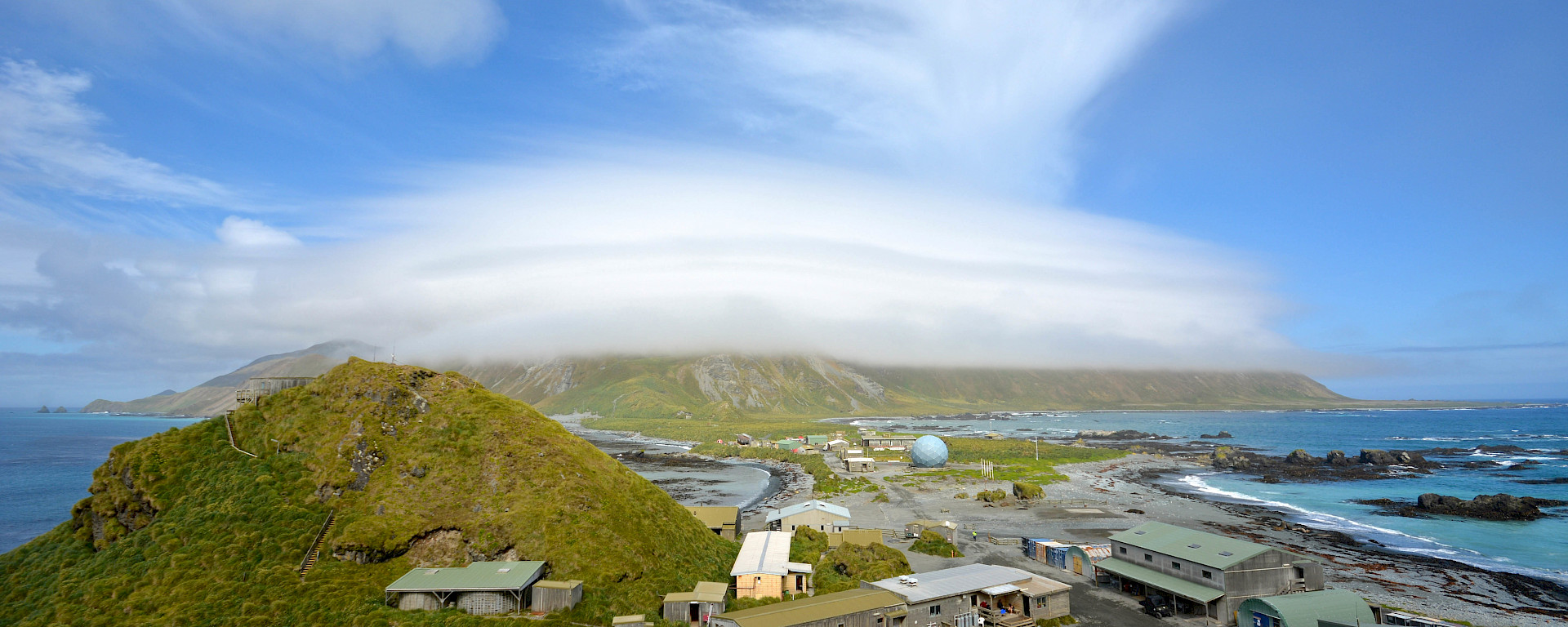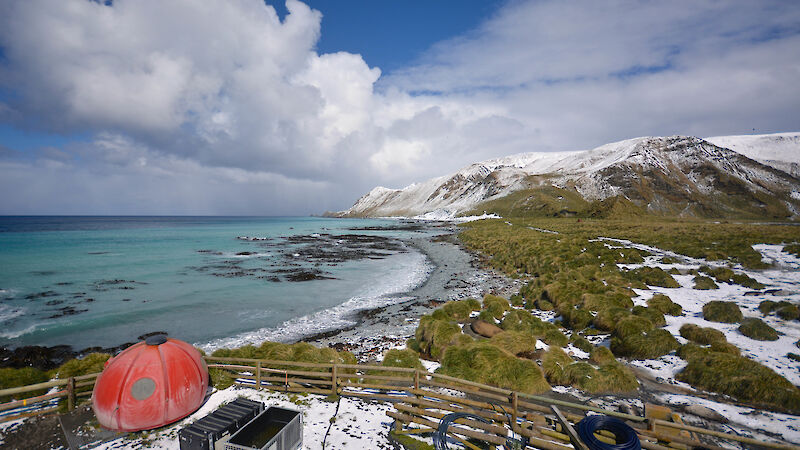This announcement was subsequently superseded. See Future of Macquarie Island.
The Australian Antarctic Division will use a network of field huts to support future research on Macquarie Island, and will close the existing permanent research station in March next year.
The Australian Antarctic Strategy and 20 Year Action Plan, launched earlier this year, highlighted the need to deal with ageing infrastructure at the Macquarie Island research station.
An independent engineering investigation concluded an urgent decision on the future of the station was required to manage increasing risks associated with occupational health and safety, environmental contamination and site-exposure to ocean inundation.
Withdrawal of a permanent presence will be a further step towards minimising human impacts on the Island. This follows the successful Macquarie Island pest eradication program which removed all introduced animals (cats, rabbits, rats and mice).
The Division’s Director, Dr Nick Gales, said the decision will allow a greater focus on our operations in the Australian Antarctic Territory.
“Macquarie Island is a unique and fragile ecosystem which holds a special place in the heart of many expeditioners and scientists, so I understand people may be disappointed with this decision,” Dr Gales said.
About a dozen expeditioner positions on the Island will be affected and the Division will work with these expeditioners to explore the possibility of re-deployment to other stations.
“The engineering report shows the cost of refurbishing the Macquarie Island buildings is such that it could not be justified within existing budgets.”
“While scientific research on the island will be impacted, opportunities to conduct high priority research will remain possible through the use of the six existing field huts and through extended ship visits into the future.”
Macquarie Island is about 1500 kilometres southeast of Hobart, about halfway between Tasmania and the Antarctic continent.
The Australian Antarctic Division has continuously operated a year-round research station on the Island since 1948.
The Island is part of Tasmania and the Tasmanian Government is responsible for monitoring and protecting the island as a wildlife reserve and World Heritage site.
A team will be sent to the Island in November to start the process of decommissioning station infrastructure.
“All essential equipment and dangerous goods, including station fuel, will be removed by ship, and the buildings secured and closed down.
“Demolition and removal of buildings and remediation of the site will be completed over the next decade,” he said.
The Division will work closely with affected agencies, including the Tasmanian Government, Bureau of Meteorology and the Australian Radiation Protection and Nuclear Safety Agency.



